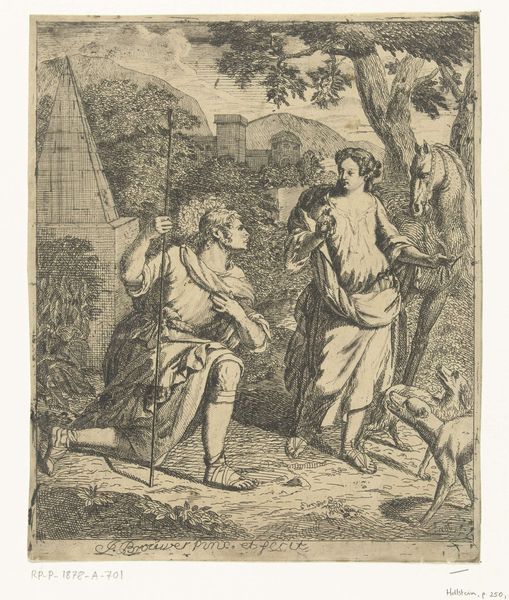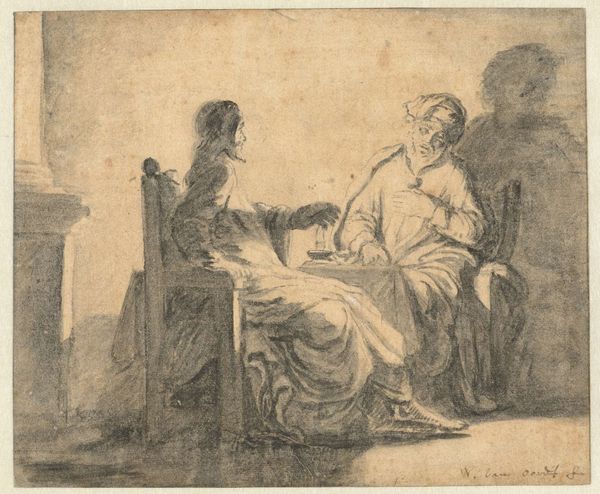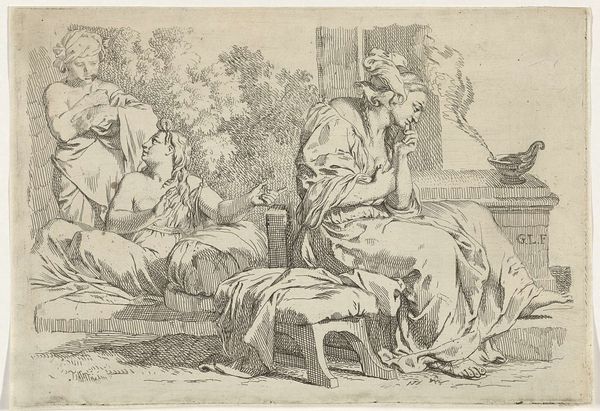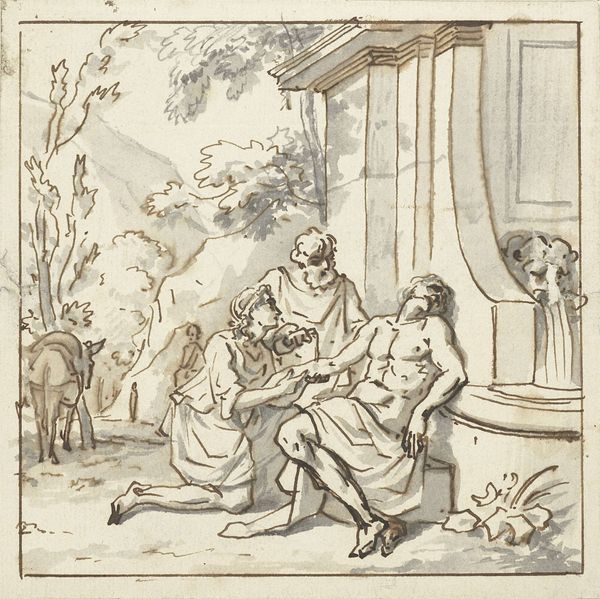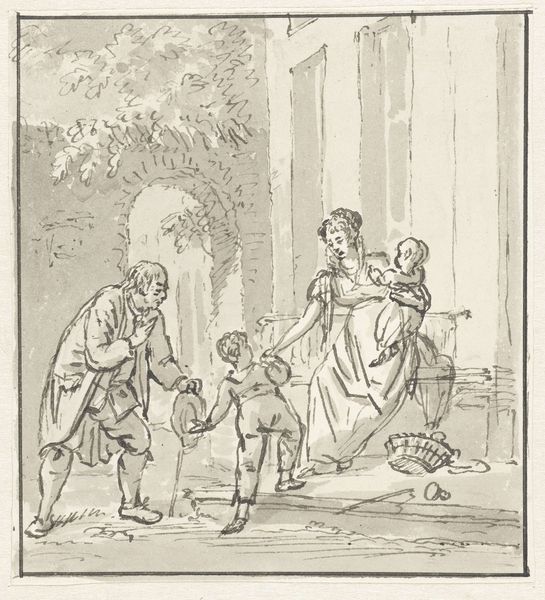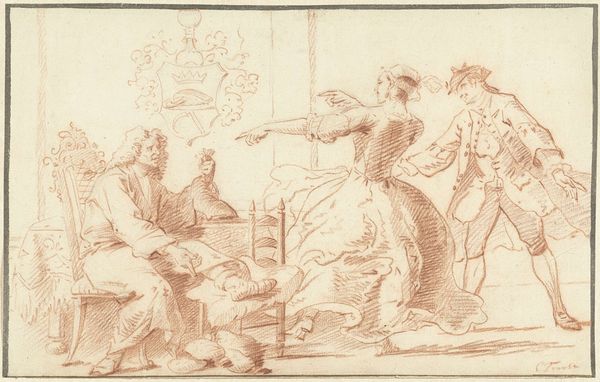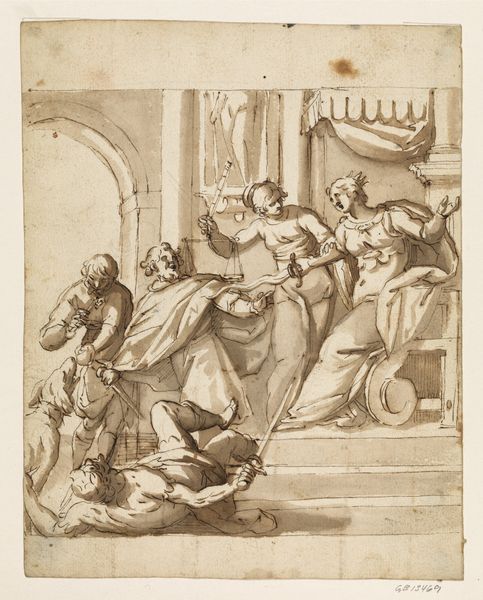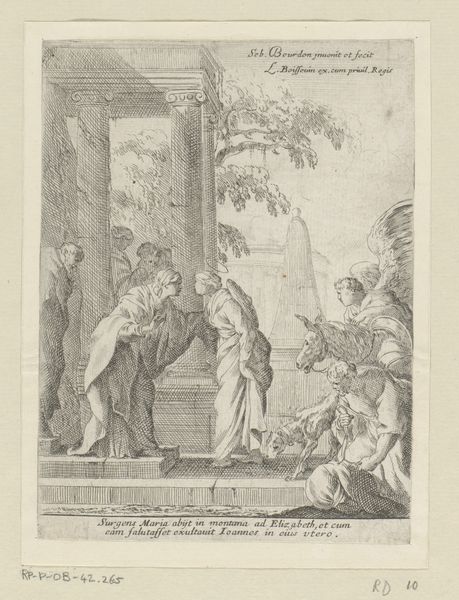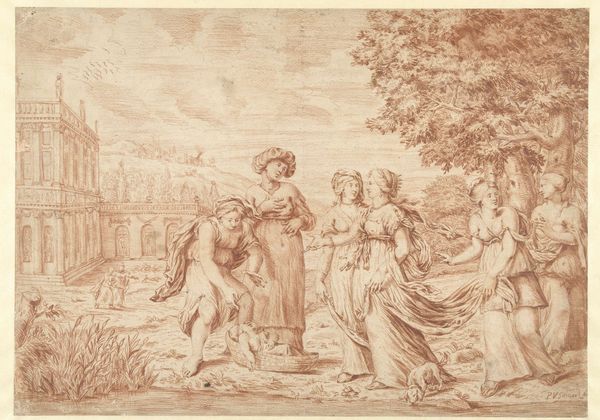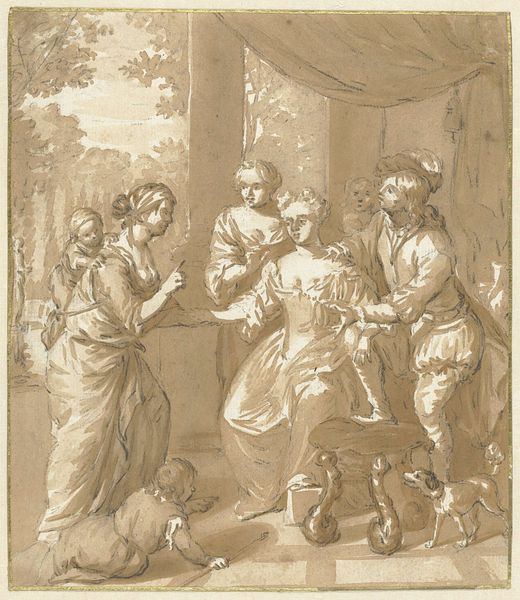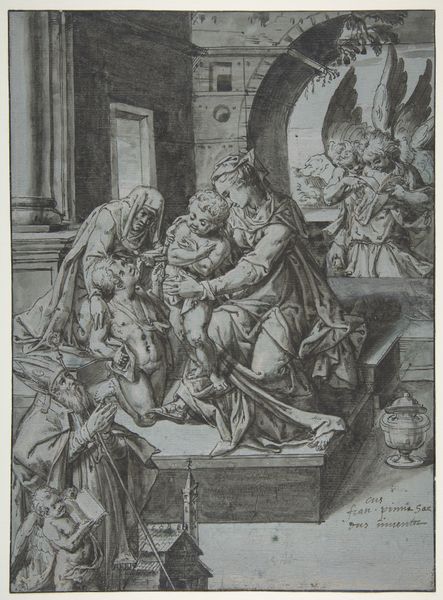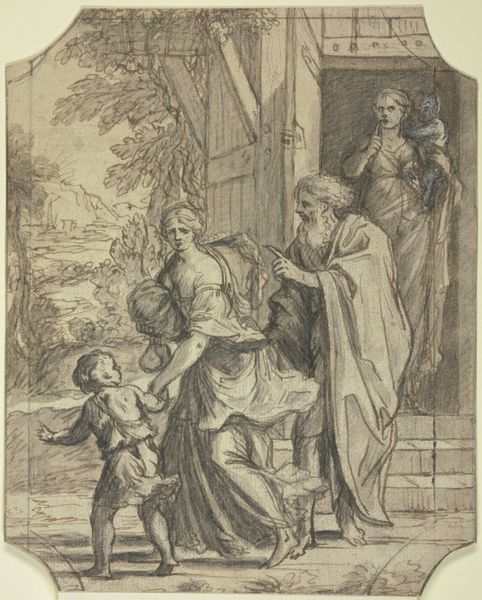
drawing, ink, pen
#
drawing
#
narrative-art
#
baroque
#
pen sketch
#
pencil sketch
#
landscape
#
figuration
#
ink
#
ink drawing experimentation
#
classicism
#
pen
#
genre-painting
Dimensions: height 221 mm, width 205 mm
Copyright: Rijks Museum: Open Domain
Curator: Jan Verkolje I's ink and pen drawing, “Twee musicerende en liefkozende jonge paren op een terras,” which roughly translates to “Two Music-Making and Courting Young Couples on a Terrace," created between 1660 and 1693, depicts just such a scene. Editor: My immediate impression is one of contained joy. The soft washes and delicate linework create a light, airy atmosphere, despite the complexity of the composition. Curator: Consider the context of its creation. The Dutch Golden Age, despite its burgeoning merchant class, was still deeply reliant on patronage and trade. Verkolje, while successful, depended on these networks. It’s possible this intimate scene was intended to subtly appeal to particular social values around leisure and courtship. Editor: I’m struck by the formal arrangement—how Verkolje uses the architecture of the terrace to frame the figures, drawing the eye through the composition with a careful interplay of light and shadow. The contrast between the detailed foreground and the sketchier background really creates depth. Curator: And what of the materiality itself? Ink, a relatively inexpensive and accessible medium, suggests a degree of practicality. Was this intended as a preparatory sketch, or was the choice of ink indicative of a broader trend in artistic production at the time? These were, after all, the early days of a truly burgeoning art market. Editor: Interesting point. Thinking about the figures themselves—their clothing, their postures—it suggests an idealized vision of upper-class leisure. The lute and violin point towards specific cultural markers; they speak volumes about artistic sensibility. It suggests harmony and balance, reflective of Classical ideals. Curator: It certainly begs the question: to what extent are we seeing a reflection of actual social practices, and to what extent are these idealized tropes employed to reinforce particular class distinctions or notions of refinement through art? Editor: Yes, there's definitely an element of artifice. But isn’t that often the role of art – to both reflect and reshape our perceptions? Verkolje is providing a vision to aspire to; isn't it lovely, how he draws us into their world? Curator: I appreciate the artist’s careful technique. He masterfully manipulates modest materials, drawing attention to not only formal structure, but also their function, place, and use value. Editor: It’s a work that invites multiple interpretations; the intersection of line, tone, and composition offers us insight, while simultaneously giving the viewer the opportunity to connect to a universal, tender moment.
Comments
No comments
Be the first to comment and join the conversation on the ultimate creative platform.
